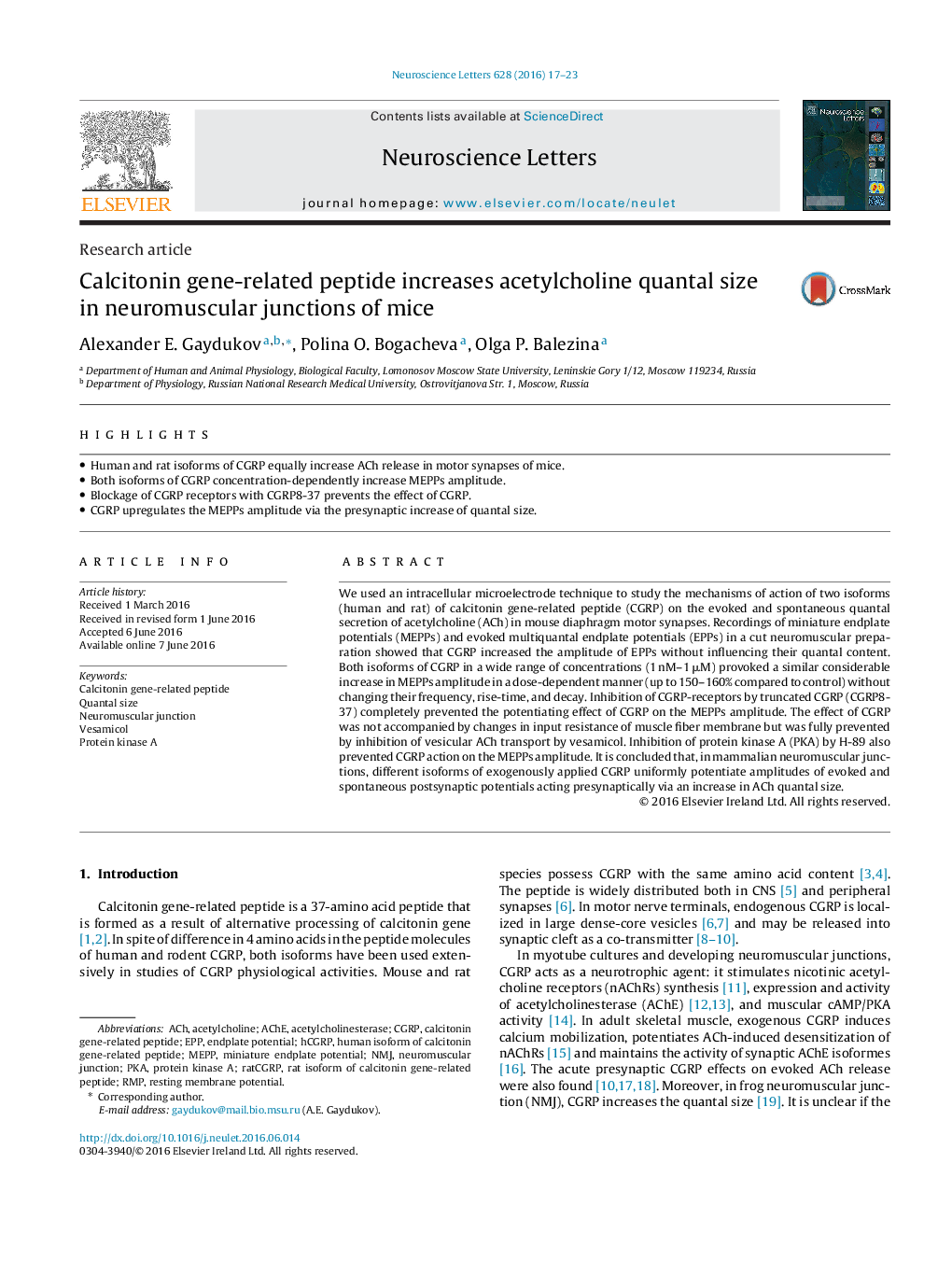| Article ID | Journal | Published Year | Pages | File Type |
|---|---|---|---|---|
| 6279336 | Neuroscience Letters | 2016 | 7 Pages |
Abstract
We used an intracellular microelectrode technique to study the mechanisms of action of two isoforms (human and rat) of calcitonin gene-related peptide (CGRP) on the evoked and spontaneous quantal secretion of acetylcholine (ACh) in mouse diaphragm motor synapses. Recordings of miniature endplate potentials (MEPPs) and evoked multiquantal endplate potentials (EPPs) in a cut neuromuscular preparation showed that CGRP increased the amplitude of EPPs without influencing their quantal content. Both isoforms of CGRP in a wide range of concentrations (1 nM-1 μM) provoked a similar considerable increase in MEPPs amplitude in a dose-dependent manner (up to 150-160% compared to control) without changing their frequency, rise-time, and decay. Inhibition of CGRP-receptors by truncated CGRP (CGRP8-37) completely prevented the potentiating effect of CGRP on the MEPPs amplitude. The effect of CGRP was not accompanied by changes in input resistance of muscle fiber membrane but was fully prevented by inhibition of vesicular ACh transport by vesamicol. Inhibition of protein kinase A (PKA) by H-89 also prevented CGRP action on the MEPPs amplitude. It is concluded that, in mammalian neuromuscular junctions, different isoforms of exogenously applied CGRP uniformly potentiate amplitudes of evoked and spontaneous postsynaptic potentials acting presynaptically via an increase in ACh quantal size.
Keywords
Related Topics
Life Sciences
Neuroscience
Neuroscience (General)
Authors
Alexander E. Gaydukov, Polina O. Bogacheva, Olga P. Balezina,
